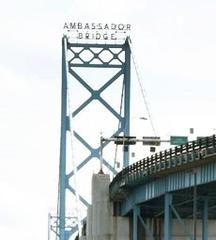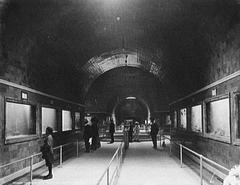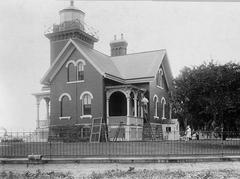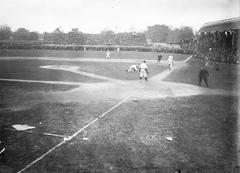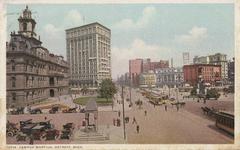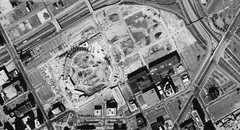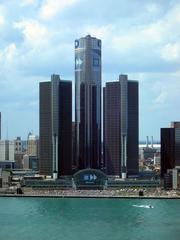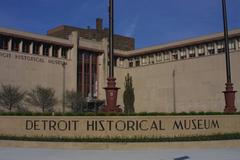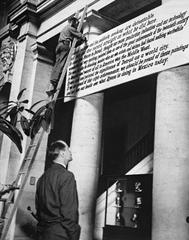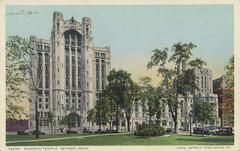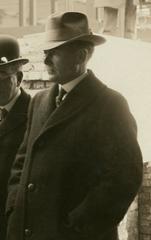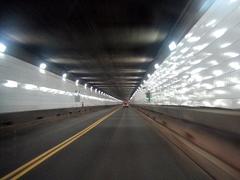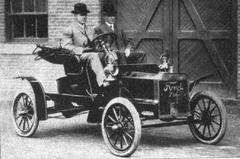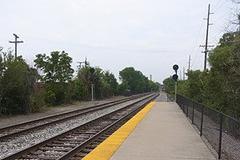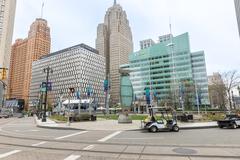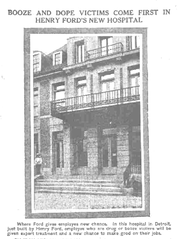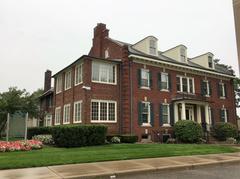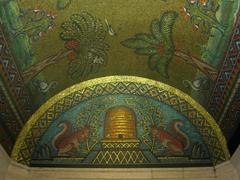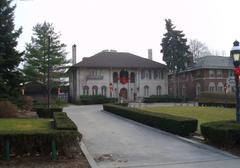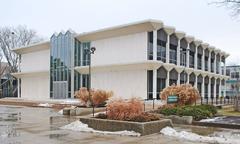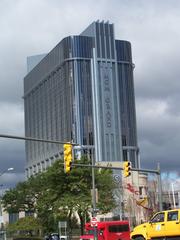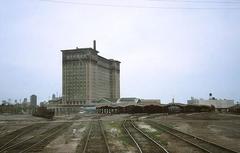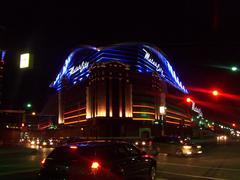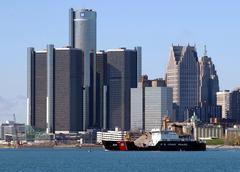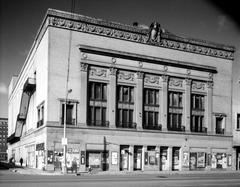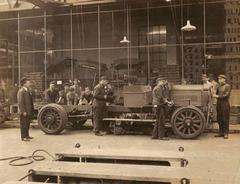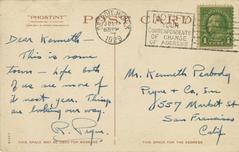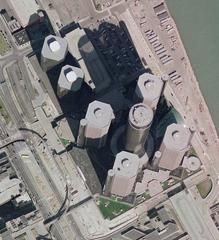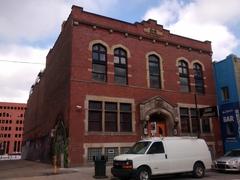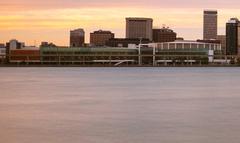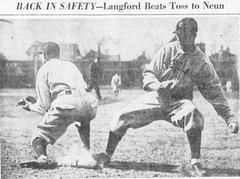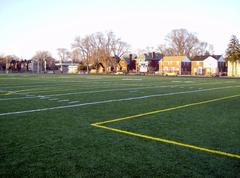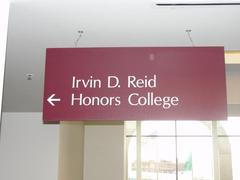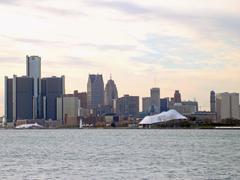
Charles Trowbridge House Detroit: Visiting Hours, Tickets & Historical Sites Guide
Date: 04/07/2025
Introduction
The Charles Trowbridge House is Detroit’s oldest documented building, standing as a tangible testament to the city’s rich early history and architectural heritage. Built in 1826 by Charles Christopher Trowbridge—a pivotal figure in Detroit’s civic and business development—this Federal-style home offers visitors a rare glimpse into the city’s 19th-century evolution. From its origins on former French colonial farmland to its Victorian-era modifications and adaptive reuse, the house embodies nearly two centuries of Detroit’s cultural and architectural transformations.
Located at 1380 East Jefferson Avenue, the Charles Trowbridge House is not just significant for its age but also for its unique blend of Federal and Victorian elements, including a distinctive three-sided bay window and a surviving stable. Although currently a private property serving as office space, the house occasionally opens its doors for special events and guided tours, welcoming history enthusiasts, architecture aficionados, and curious travelers.
This guide covers everything you need to know for planning your visit, including visiting hours, ticketing, accessibility, guided tours, travel tips, and nearby attractions such as the Detroit Riverwalk and Belle Isle Park. For the most up-to-date information, check the Detroit Historical Society and the Trowbridge Law Firm website.
Table of Contents
- Introduction
- Early History and Construction
- Architectural Evolution
- The Trowbridge Family and Later Occupants
- Preservation and Current Use
- Visiting the Charles Trowbridge House
- Nearby Attractions
- Frequently Asked Questions (FAQ)
- Conclusion
- Resources and Further Reading
Early History and Construction
Built in 1826 by Charles Christopher Trowbridge, the house stands on land that was once part of the original French ribbon farms—specifically, the Mullett farm, granted to Charles Chauvin. The $2,500 construction reflected Trowbridge’s stature and intent for a family residence. Typical of rural homes of the time, the house’s original orientation placed River Road (now East Jefferson Avenue) behind it, a layout that shifted as Detroit expanded.
Architectural Evolution
Federal and Greek Revival Origins
The Charles Trowbridge House exemplifies early 19th-century Federal and Greek Revival styles, with a balanced five-bay façade, central hallway, and simple, symmetrical detailing. The house’s original design included both front and rear entrances for flexible access and ventilation—a common practice in domestic architecture of the era (Detroit Historical Society; Wikipedia).
Victorian Modifications
In the late 19th century, Victorian elements, such as a projecting three-sided bay window and decorative pediment, were added to the façade, reflecting changing tastes and the increasing wealth of Detroit’s residents. Around 1850, a brick rear addition and stable were constructed, and in 1889, the eastern two bays were removed to accommodate an adjacent apartment building (Curbed Detroit; Wikipedia).
Materials and Craftsmanship
The original structure used locally sourced wood framing and clapboard siding, with a gabled roof. The later brick addition signaled Detroit’s shift toward more fire-resistant construction as the city urbanized (Detroit Historical Society).
Preservation and Adaptive Reuse
The house was recognized as a Michigan State Historic Site in 1974 and listed on the National Register of Historic Places in 1976. Despite periods as a rooming house and later a single-family residence, it has been carefully preserved and today houses private offices (Wikipedia).
The Trowbridge Family and Later Occupants
Charles Trowbridge resided here until his death in 1883, after which the house remained with his family for decades. In the late 1920s, it served as a studio for Detroit artist Roman Kryzanowski. The Great Depression saw it converted to a rooming house, but in 1942, Marie Cavanaugh restored it as a single-family home.
Preservation and Current Use
Now a Michigan State Historic Site and listed on the National Register of Historic Places, the Charles Trowbridge House continues its legacy as a part of Detroit’s living history. Today, it serves as office space for firms such as the Trowbridge Law Firm and Trowbridge Realty, ensuring its continued preservation (Trowbridge Law Firm).
Visiting the Charles Trowbridge House
Visiting Hours
The house is not regularly open for public tours, as it is a privately owned property. However, special events and guided tours are occasionally offered—always check the Detroit Historical Society or Trowbridge Law Firm website for announcements.
Tickets and Admission
There is no regular admission fee. Ticket information for special events or guided tours is provided in advance via official channels or Detroit tourism platforms (Tourist Places Guide).
Accessibility
Due to the historic nature of the building, wheelchair access is limited. Visitors with mobility needs should contact event organizers ahead of time for accommodations.
Guided Tours
Guided tours are only offered during select events. These tours provide in-depth historical and architectural insights and are highly recommended for those interested in Detroit’s heritage (Detroit Historical Society).
Travel Tips
- Parking is available along East Jefferson Avenue and nearby streets.
- Bring a camera—architectural details like the Victorian bay window and Doric-columned entrance make for excellent photos.
- Plan to explore nearby attractions such as the Detroit Riverwalk or Belle Isle Park for a well-rounded visit.
Nearby Attractions
The Charles Trowbridge House is ideally located for exploring other Detroit landmarks:
- Detroit Riverwalk: Enjoy scenic views and public art installations.
- Belle Isle Park: A historic island park with gardens and museums.
- Detroit Institute of Arts: Renowned for its extensive art collection.
- Greektown: Offers dining, shopping, and cultural experiences.
Frequently Asked Questions (FAQ)
Q: What are the Charles Trowbridge House visiting hours?
A: The house is not regularly open, but special open house events may be listed on the Detroit Historical Society or Trowbridge Law Firm.
Q: Is there an admission fee?
A: No regular admission fee; event or tour fees may apply during special openings.
Q: Is the house wheelchair accessible?
A: Accessibility is limited. Contact organizers in advance for specific accommodation requests.
Q: Are guided tours available?
A: Only during select historical events—watch for announcements on official websites.
Q: Where can I park?
A: Street parking is available on East Jefferson Avenue and nearby areas.
Conclusion
The Charles Trowbridge House is more than just Detroit’s oldest residential building—it’s a vivid link to the city’s early days, architectural heritage, and evolving urban landscape. Though primarily in private use, periodic tours and events offer unique opportunities to engage with Detroit’s foundational history. Combine your visit with other nearby attractions for a comprehensive Detroit experience.
For the latest updates on visiting hours, tours, and events, consult the Detroit Historical Society and Trowbridge Law Firm.
Resources and Further Reading
- Detroit Historical Society – Charles Trowbridge House
- Gander Newsroom: The 8 Oldest Buildings in Detroit
- Curbed Detroit – Trowbridge House
- Tourist Places Guide: Downtown Detroit Attractions
- National Register of Historic Places
- Visit Detroit – Rivertown District
- Trowbridge Law Firm
Ready to discover more? Download the Audiala app for curated tours, event notifications, and insider insights on Detroit’s historic sites.

